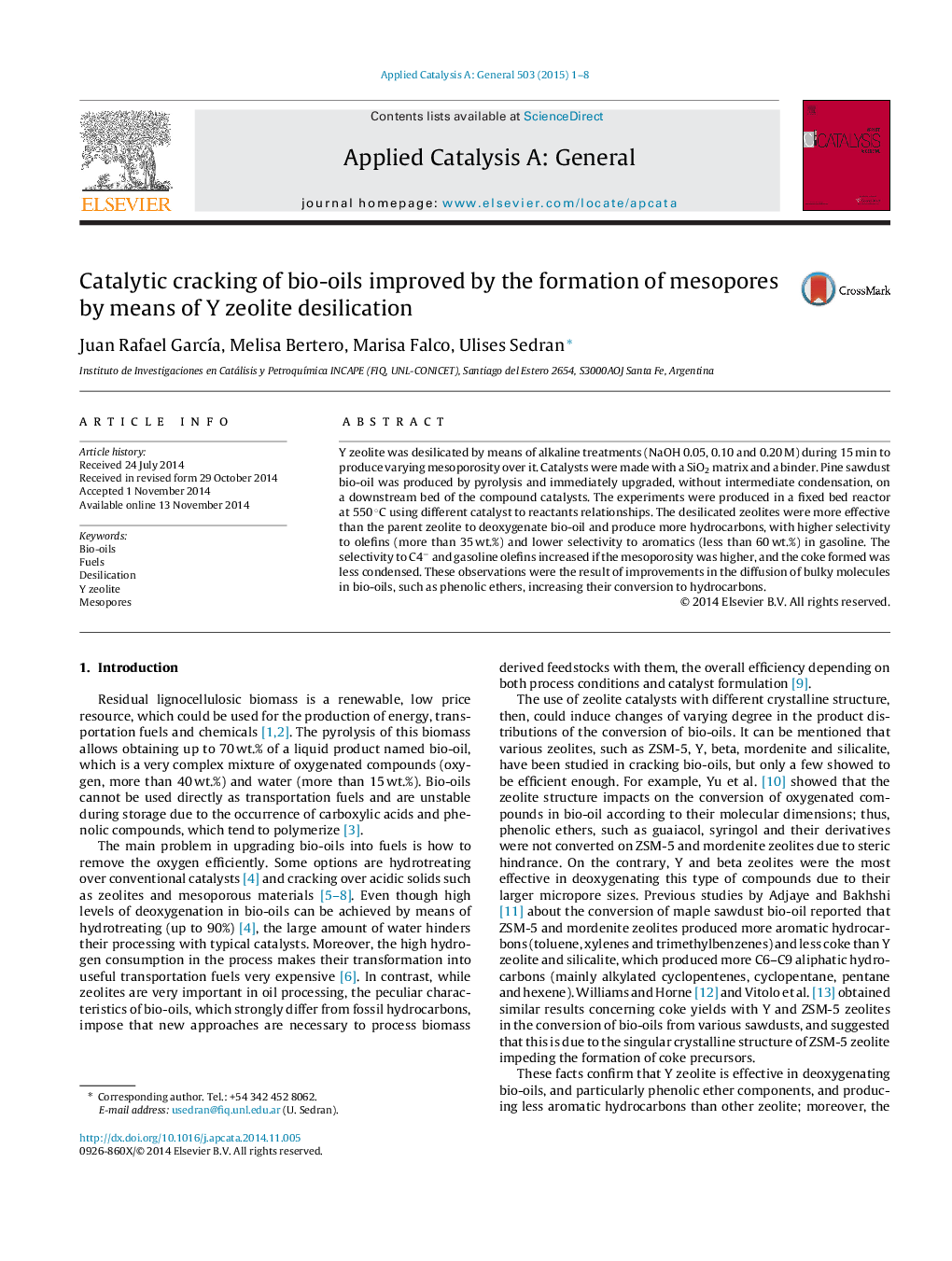| Article ID | Journal | Published Year | Pages | File Type |
|---|---|---|---|---|
| 39239 | Applied Catalysis A: General | 2015 | 8 Pages |
•The alkaline desilication of Y zeolite forms mesopores on the crystalline structure.•As-produced pine sawdust bio-oil was upgraded immediately on desilicated Y zeolites.•Less aromatics and more olefins in gasoline were produced by desilicated zeolites.•The selectivity to C4- olefins increased in mesoporosiy was higher.•New mesopores improved diffusion of bulky molecules of oxygenated compounds.
Y zeolite was desilicated by means of alkaline treatments (NaOH 0.05, 0.10 and 0.20 M) during 15 min to produce varying mesoporosity over it. Catalysts were made with a SiO2 matrix and a binder. Pine sawdust bio-oil was produced by pyrolysis and immediately upgraded, without intermediate condensation, on a downstream bed of the compound catalysts. The experiments were produced in a fixed bed reactor at 550 °C using different catalyst to reactants relationships. The desilicated zeolites were more effective than the parent zeolite to deoxygenate bio-oil and produce more hydrocarbons, with higher selectivity to olefins (more than 35 wt.%) and lower selectivity to aromatics (less than 60 wt.%) in gasoline. The selectivity to C4− and gasoline olefins increased if the mesoporosity was higher, and the coke formed was less condensed. These observations were the result of improvements in the diffusion of bulky molecules in bio-oils, such as phenolic ethers, increasing their conversion to hydrocarbons.
Graphical abstractFigure optionsDownload full-size imageDownload high-quality image (255 K)Download as PowerPoint slide
